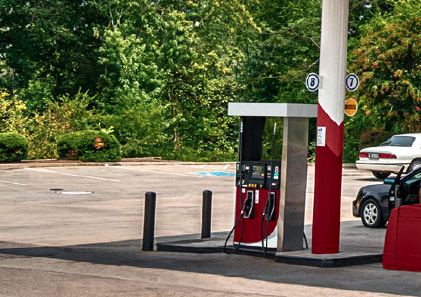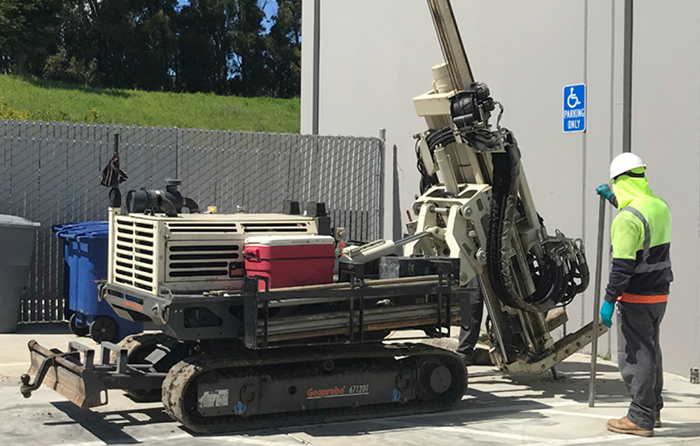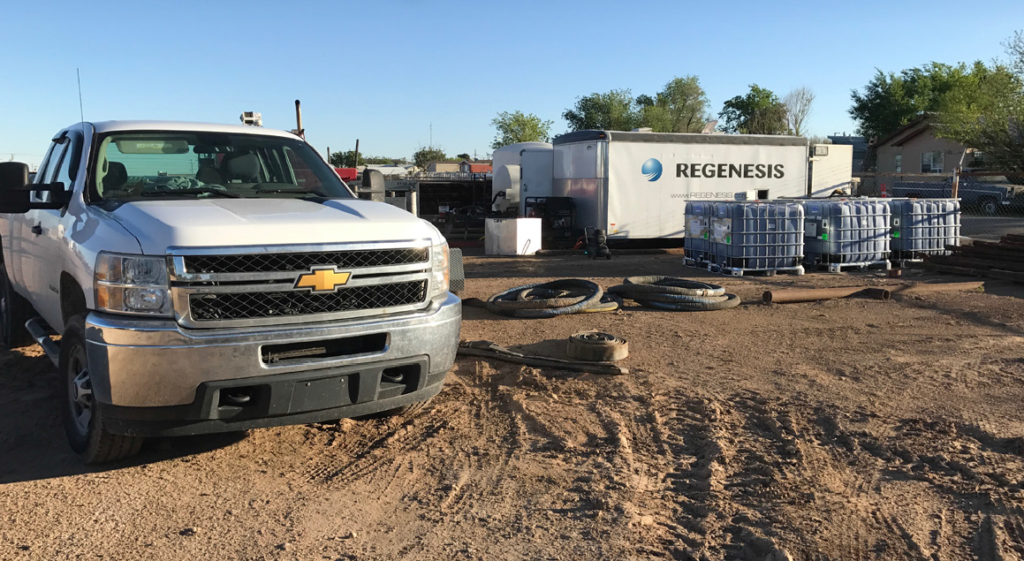Combined ISCR and ERD remedial approach knocks down PCE concentrations in Poland
Rapid groundwater treatment achieved at manufacturing plant, without daughter product build-up
At an active manufacturing plant in the region of Greater Poland, in the West of the country, historical perchloroethylene (PCE) contamination was found to be impacting both soil and groundwater. Environmental company PROTE determined that contamination originated from a number of spills and leakages that occurred over the >20 years of manufacturing on the site
The canal adjacent to the site was identified as a potential downgradient receptor vulnerable to impact from offsite advection of the contamination. Therefore remediation was driven by a requirement to remove the site owner’s potential liability, whilst being completed within strict budgetary restrictions.
Highlights:
- Safe and easy co-injection of PlumeStop and S-MicroZVI
- A grid of 30 injection wells was used, with a 4m spacing between wells
- A rapid, significant drop in PCE concentrations was achieved in the entire treatment area, with no daughter products observed
- Monitoring is ongoing
2m 4s reading time
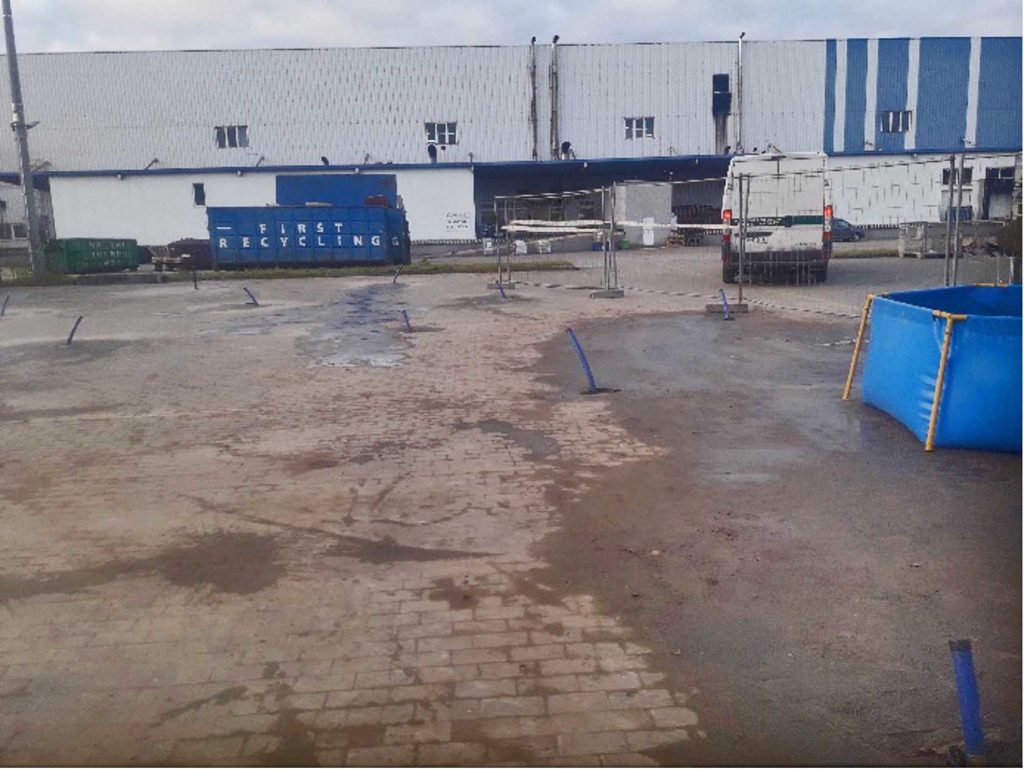
“The collaboration with REGENESIS, both during the design phase and the operational phase of the remediation works, has enabled us to apply cutting-edge technologies that reached the remediation objectives in a short period of time, whilst respecting the surrounding environment and minimising impacts on the commercial activities on the site.”
Michal Tatera, Kierownik Projektu ds. Ochrony Środowiska, PROTE Technologie dla Środowiska Sp. z o.o.
Remediation Goals Met Post PetroFix Application
UST release site now poised for closure
After reviewing the available remedial options, Advanced Environmental Technologies, LLC (AET), a leading environmental consulting and engineering firm in the US, determined PetroFix® Remediation Fluid would provide the most economical and efficient means to reduce concentrations below the groundwater cleanup target levels and achieve site closure for this former petrol filling station.
Case study highlights:
- Injecting PetroFix was the lowest cost option and fastest route to site closure
- An air sparge/multi-phase extraction (AS/MPE) system provided significant reductions to PHC concentrations, but was unable to meet required cleanup levels.
- PetroFix application quickly achieves cleanup goals and sustains reductions for over two years (and counting)
4m 21s reading time
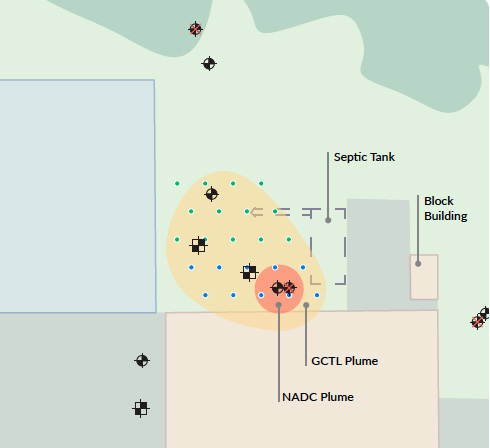
Two UK airport projects demonstrate successful in situ PFAS remediation
PFAS plumes treated with colloidal activated carbon barriers unlock regulatory permission for full-scale remedial works
We were contacted by two separate consultants working at a private and an international Airport in the UK. The groundwater at both sites was contaminated with PFAS.
REGENESIS and the environmental consultancies worked closely with the airport managers and separate regulatory authorities to ensure that two successful pilot trials were delivered demonstrating the efficacy of PlumeStop® Colloidal Activated Carbon (CAC) in preventing the advection of PFAS contamination in groundwater.
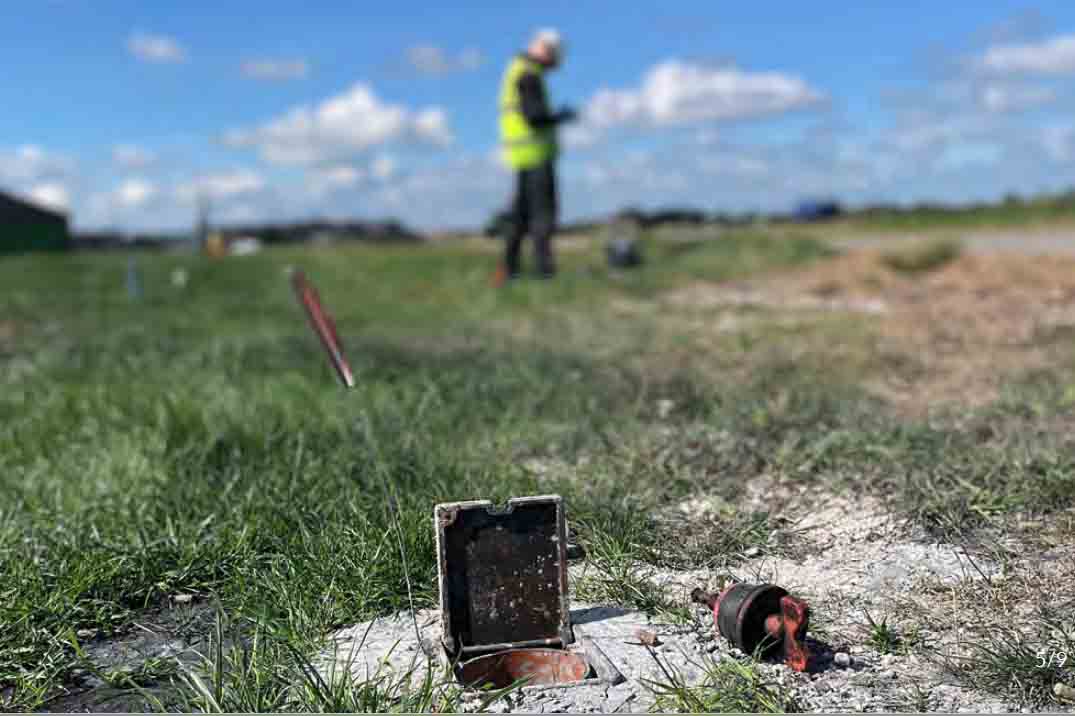
Case Study Highlights
-
For both sites, REGENESIS undertook Design Verification Testing (DVT) before installing 10m long pilot-scale barriers
-
The target compounds PFOS and PFOA were reduced to at, or close to, detection limits. The total PFAS concentrations were also significantly reduced.
-
The regulatory authorities granted permission for the progression of full-scale works on both sites
-
UPDATE : The full-scale works have now been completed at both sites and monitoring is ongoing
3m 45s reading time
PlumeStop Successfully Remediates PFAS at Alaska Airport
This case study reviews a site where PlumeStop® Colloidal Activated Carbon was applied to treat PFAS resulting from aqueous film-forming foam (AFFF) usage at an airport facility in Alaska. The application has reduced the five targeted PFAS below detection limits and applicable cleanup levels in a challenging hydrogeologic environment over a sampling period now approaching two years. In 2017, Fairbanks International Airport began an investigation in collaboration with the Alaska Department of Environmental Conservation and the Fairbanks office of Shannon & Wilson, a leading Pacific Northwest-based environmental consulting firm, to investigate the extent of PFAS migration from the site. Shannon & Wilson engaged REGENESIS for a pilot test plan to remediate one of the identified AFFF release areas, following successful treatments demonstrated at other sites.
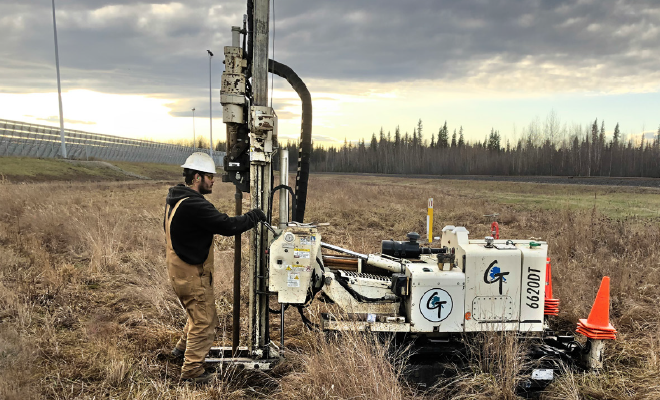
Case study highlights:
- Targeted PFAS contaminants remediated to below detection limits at airport site
- Challenging environmental conditions overcome for a successful PFAS source zone treatment
- PlumeStop application has completely remediated the five individual PFAS targeted, reducing concentrations from 1,200 ng/L to non-detect
7m 31s reading time
225m Permeable Reactive Barrier Treats TCE and Chromium (VI)
Sustainable and cost-effective remediation of a co-mingled plume in a sensitive chalk aquifer
A 48 hectare site in the UK was to be redeveloped for mixed commercial and residential use. The existing site included a mix of historic and existing industrial land use, including a metal plating works, surrounded by agricultural land and residential housing. The Mott MacDonald engaged early with REGENESIS regarding potential options for remediation.
Case Study Highlights:
- A large-scale remediation project with challenging conditions: geology, underground services, ongoing site use and multiple stakeholders
- Treatment of a co-mingled chromium (VI) and TCE plume via enhanced biological dechlorination and chemical reduction, using: S-MicroZVI,
3-D Microemulsion and BDI Plus - Pilot study proves appropriateness of the proposed in situ remedial solution, allowing regulatory sign off for the full scale works.
- Post remediation monitoring results to date show significant chromium reduction and TCE below detection limits
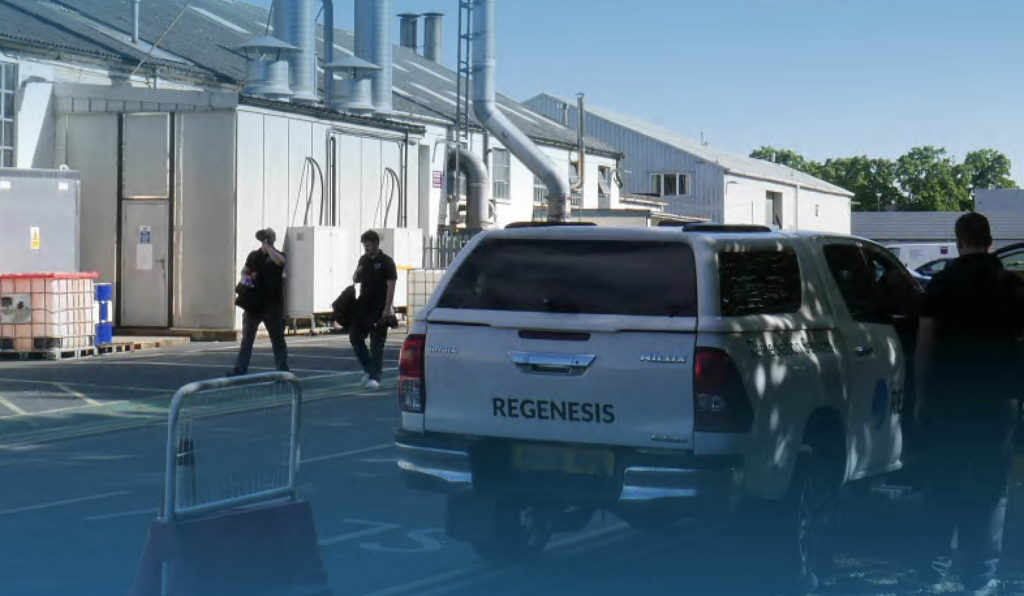
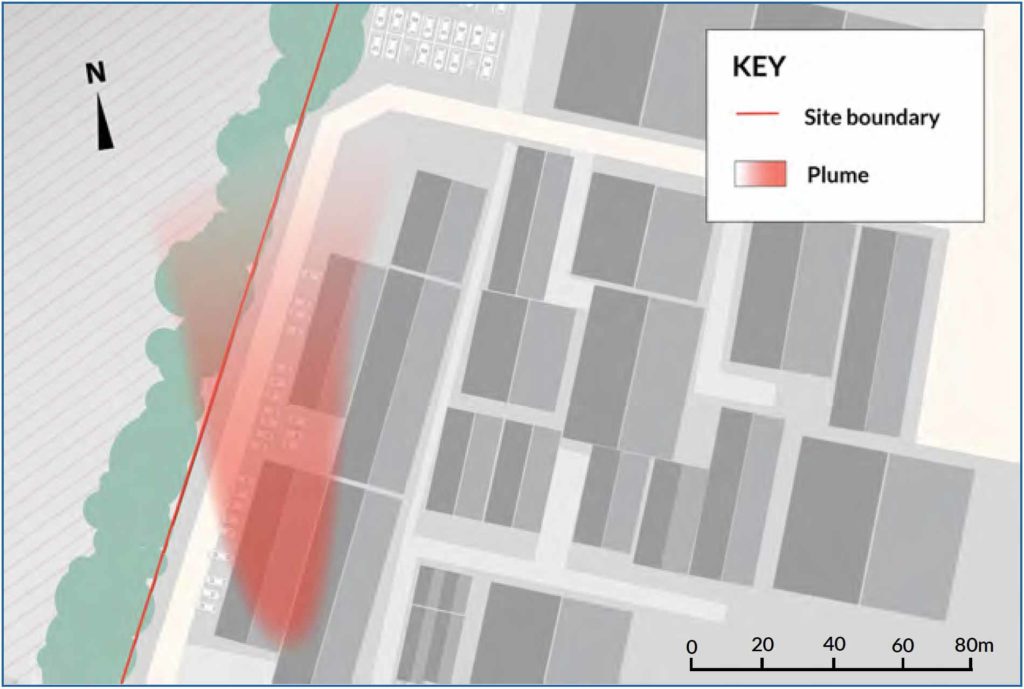
98% PCE Reduction Achieved After 16 Months
The site is a former dry-cleaning supply distribution business that operated from 1957 to 2000. The former facility provided laundry chemicals, including detergents and spotting chemicals, packaging products such as hangers and polyethylene bags, and bulk deliveries of tetrachloroethene (PCE). Remediation at the site was completed in two primary phases. The first phase was a targeted excavation and soil mixing event focused on addressing the highly impacted shallow soils and smear zone. The second phase was focused on treating the groundwater PCE plume onsite and preventing further plume migration offsite.
Case study highlights:
- High PCE concentrations were detected in soil and groundwater during a site investigation
- A pragmatic, phased approach was used to target PCE in soil and groundwater
- The multi-component treatment was immediately effective and has maintained 98% PCE reduction in onsite groundwater
4m 23s reading time

Site Closure Achieved: Sustainable Remediation of PFAS at New York Refinery
Green, Sustainable Remediation Reduces Cost and Environmental Impact
A 25-acre former refinery located in a mixed-use industrial/commercial area in New York was contaminated with PFAS. Benchmark & TurnKey, a leading engineering and redevelopment consulting company, engaged REGENESIS for an in situ remedy that would effectively and economically cut off the groundwater plume and prevent migration of PFAS offsite.
The site was entered into the New York State Department of Environmental Conservation’s (NYSDEC’s) Brownfield Cleanup Program (BCP) to facilitate its commercial redevelopment. Remedial alternatives were evaluated for a comprehensive site closure strategy, and approaches were scored based on NYSDEC’s Green Remediation Policy Document (DER-31), which considers the “environmental impacts of treatment technologies and remedy stewardship over the long term.”
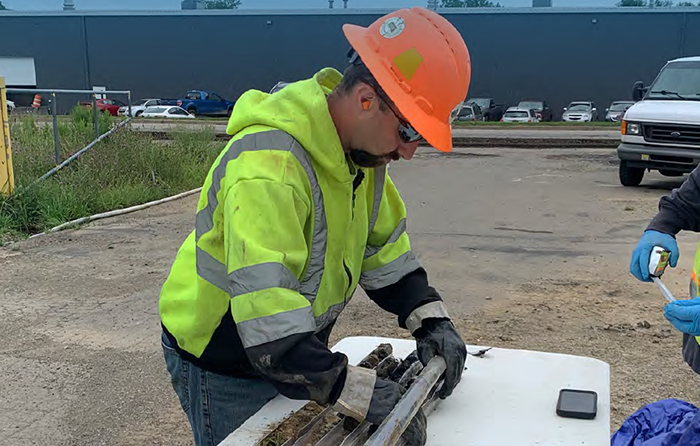
Case study highlights:
- Brownfield cleanup program’s green remediation policy leads to PlumeStop for PFAS treatment
- Skilfully managed PlumeStop application achieves sustainability and cost reduction objectives
- NYSDEC confirms cleanup requirements have been achieved, making the site eligible for redevelopment
8m 45s reading time
PFAS Eliminated for 3.5 Years and Counting
This case study reviews a pilot test to remove PFAS risk via an in situ colloidal activated carbon barrier at Camp Grayling in Crawford County, Michigan, a large year-round military training center operated by the Michigan Army National Guard (MIARNG).
Colloidal activated carbon was selected because of the expected rapid reductions of PFAS by removal from the dissolved mobile phase, as well as its expected lower total project costs when compared to operating a mechanical system over a similar time. The MIARNG decided to conduct a PlumeStop pilot test to determine if this treatment would meet their site goals prior to a possible full-scale application. The goals for this pilot project were to utilize an approach that could both protect the Grayling community from exposure and cost-effectively expand to a full-scale application.
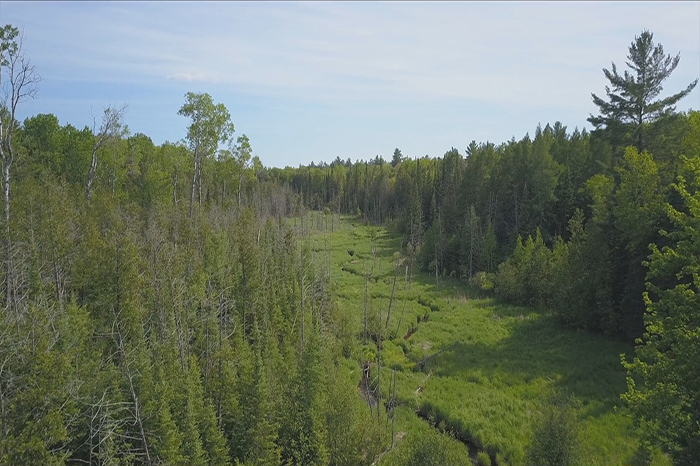
This case study features the following:
- Results 3.5 years post-application show PFAS and PCE reduced to non-detect
- New, innovative approach using an in situ colloidal activated carbon barrier to eliminate PFAS exposure pathway and protect the community
- Collaborative effort amongst various State of Michigan and military departments
- Economical and effective pilot study design
8m 59s reading time
Treatment of a widespread plume beneath Bologna city centre in Italy
A widespread plume of chlorinated solvents (CHC) has been monitored for more than a decade underneath the train station and extending out under the surrounding urban area of Bologna, Italy. The intention on this site was to treat all of the accessible ‘hot spots’ present within the plume, with the first area being used as a pilot test to confirm dose and distribution.Read More
PlumeStop Barrier Protects Drinking Water Supply Wells
This case study reviews a former chemical manufacturing facility in Texas where PlumeStop® Colloidal Activated Carbon was used in a permeable reactive barrier (PRB) to halt the movement of chlorinated solvents in groundwater. EA Engineering, Science, and Technology, Inc., PBC, a leading multi-disciplinary environmental and engineering consulting firm, contracted REGENESIS to implement the solution. PlumeStop was to be applied as part of an in situ bioremediation PRB near the distal end of the plume to promote sorption-enhanced natural attenuation of the contaminants.
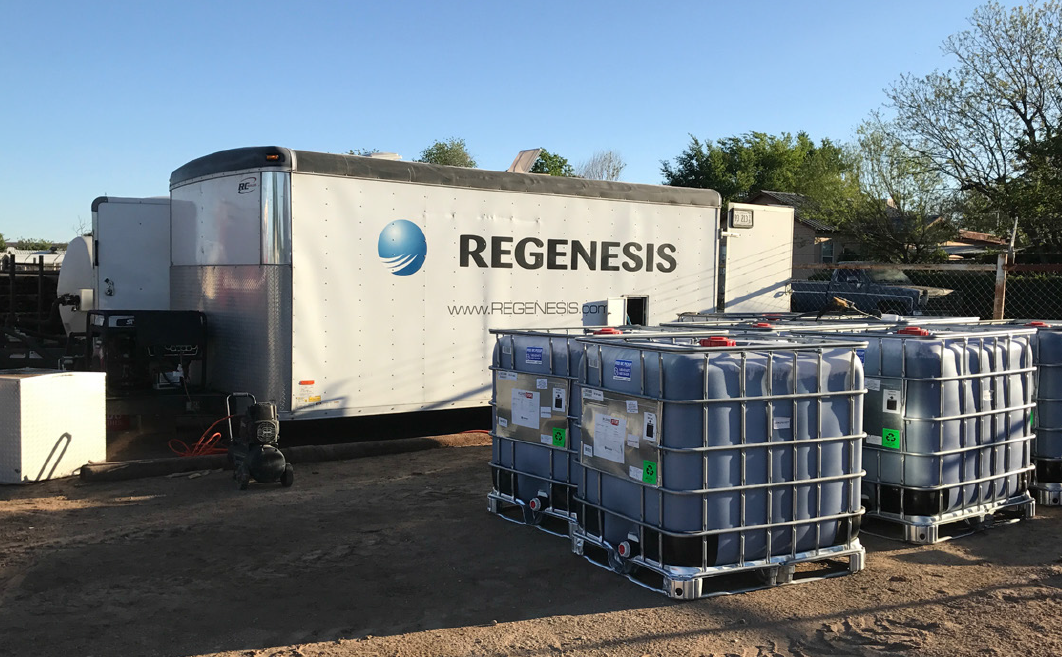
Case study highlights:
- Innovative remedial approach addresses large PCE plume at a bedrock site under the CERCLA-Regulatory Framework
- Substrates successfully addressed contaminants in the Ogallala Sandstone
- PlumeStop PRB successfully cut off PCE and chlorinated solvent daughter products and prevented further movement downgradient toward private water supply wells
9m 46s reading time

 Americas
Americas Europe
Europe Français
Français Deutsch
Deutsch Italiano
Italiano Español
Español
